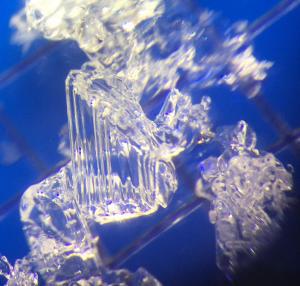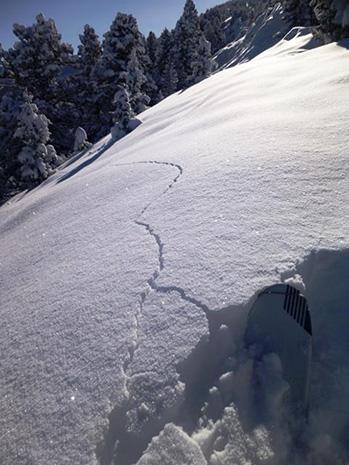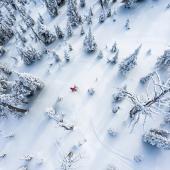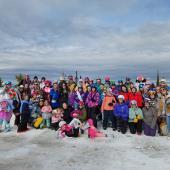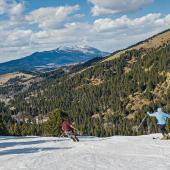Depth Hoar
A rotten way to start the season.
The snowpack is a record of weather events that take place during the winter. Heavy snows, wind, and even long dry spells, help create unique layers in the snowpack. The order in which these weather events occur determines both the structure and stability of the pack. The layers that tend to cause the most avalanche problems generally form between storms. Known as persistent weak layers, depth hoar, surface hoar, and near-surface facets are all problem layers that form in southwestern Montana. Each of these can exist in the snowpack for long periods of time.
In many locations around Montana, the start of the 2015-16 winter season has created a near prefect recipe for the development of depth hoar – a persistent weak layer that forms near the base of the snowpack. Depth hoar forms when a shallow snowpack, typically less than one meter deep, is exposed to a cold and clear weather pattern that persists for an extended period of time. Under these conditions, individual snow crystals become faceted and angular, making it very difficult for these grains to bond together. This creates a weak and sugary base for the winter snowpack.
Without an overlying slab, depth hoar does not create an avalanche hazard. However, once depth hoar gets loaded by new snow it’s often highly reactive, producing obvious signs of instability such as cracking and collapsing along with avalanche activity. Depth hoar is typically most unstable during the first few loading events of the season. One frightening characteristic of freshly loaded depth hoar is its ability to produce remotely triggered avalanches, meaning you can trigger avalanches from a distance. This can create a dangerous situation since it’s possible to trigger an avalanche from at or near the bottom of a slope.
As depth hoar gets buried deeper in the pack, it often becomes less reactive. This means it displays fewer signs of instability such as cracking and collapsing and it may even be possible for one or many riders to hit a slope without producing an avalanche. This creates a tricky situation. Tracks on a slope can produce a false sense of security and lure riders into thinking the slope is stable, when in fact the slope is still capable of producing an avalanche. This usually occurs because the overlaying slab becomes more supportable, making it harder to impact the buried weak layer. However, once a fracture is initiated in a buried depth hoar layer, it typically holds a high propagation propensity.
As depth hoar gets capped by a deeper and denser slab, it often requires finding a specific spot to trigger an avalanche. These spots are known as trigger points. Trigger points are often located near the thinner edges of the slab or around rock outcroppings where it's more likely to impact the buried weak layer. Once a fracture is initiated in the weak layer, it can propagate into deeper portions of the slab, producing large and often destructive avalanches. This is because avalanches typically fail near the ground with buried depth hoar, releasing the entire season snowpack.
The bottom line with buried depth hoar is this: it can’t be trusted! As the season goes on, it will become increasingly important to pay attention to the development and distribution of this layer. Reading the daily avalanche advisory from your local avalanche forecast center is an easy step to staying on top of the depth hoar problem. Digging snowpits is also an important step in assessing the strength and distribution of buried depth hoar. If this layer exists in the snowpack, it’s best to be conservative and enjoy lower angle slopes that are unlikely to produce avalanches.
This article was submitted by Eric Knoff of the Gallatin National Forest Avalanche Center. It originally appeared on mtavalanche.com.


